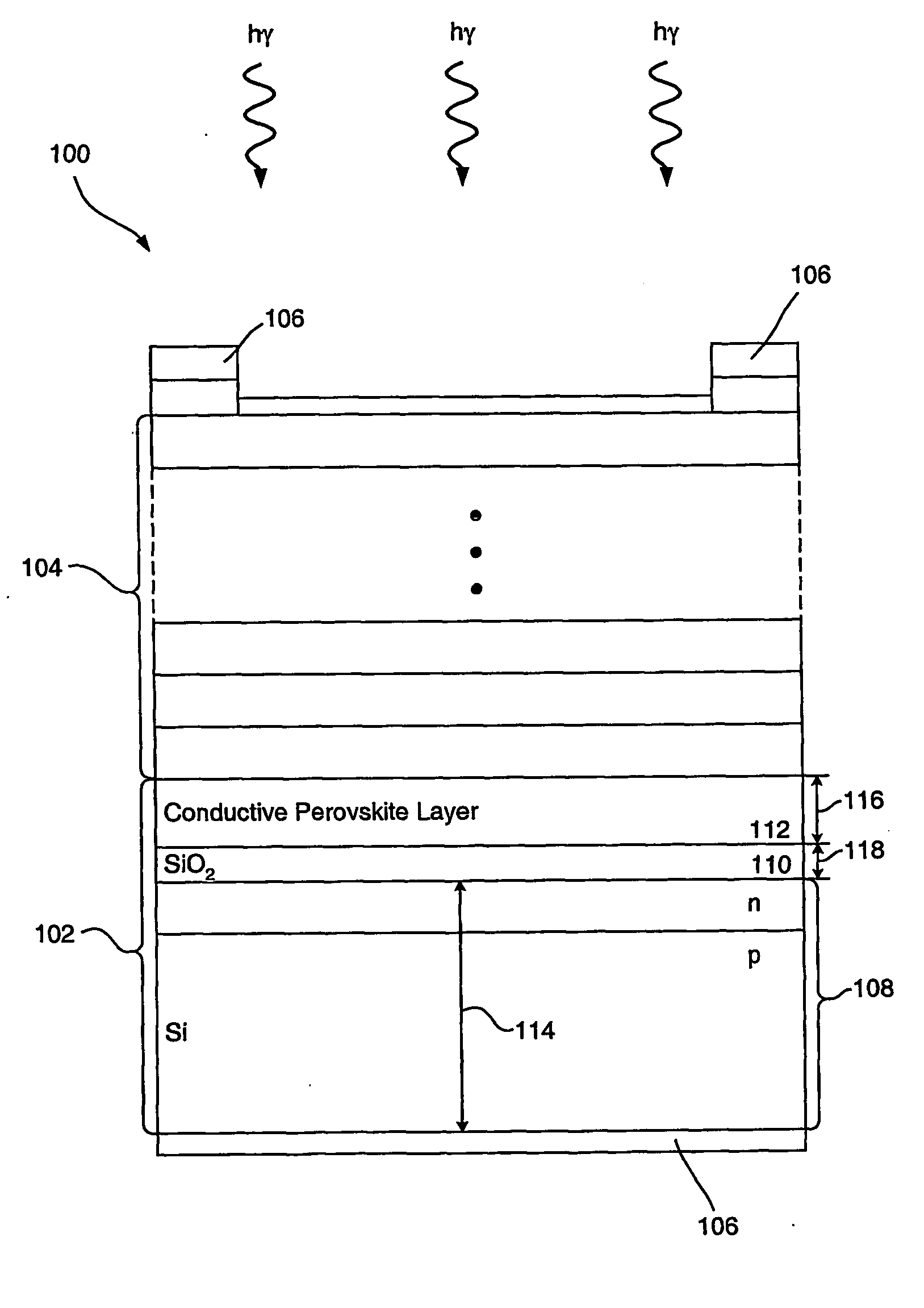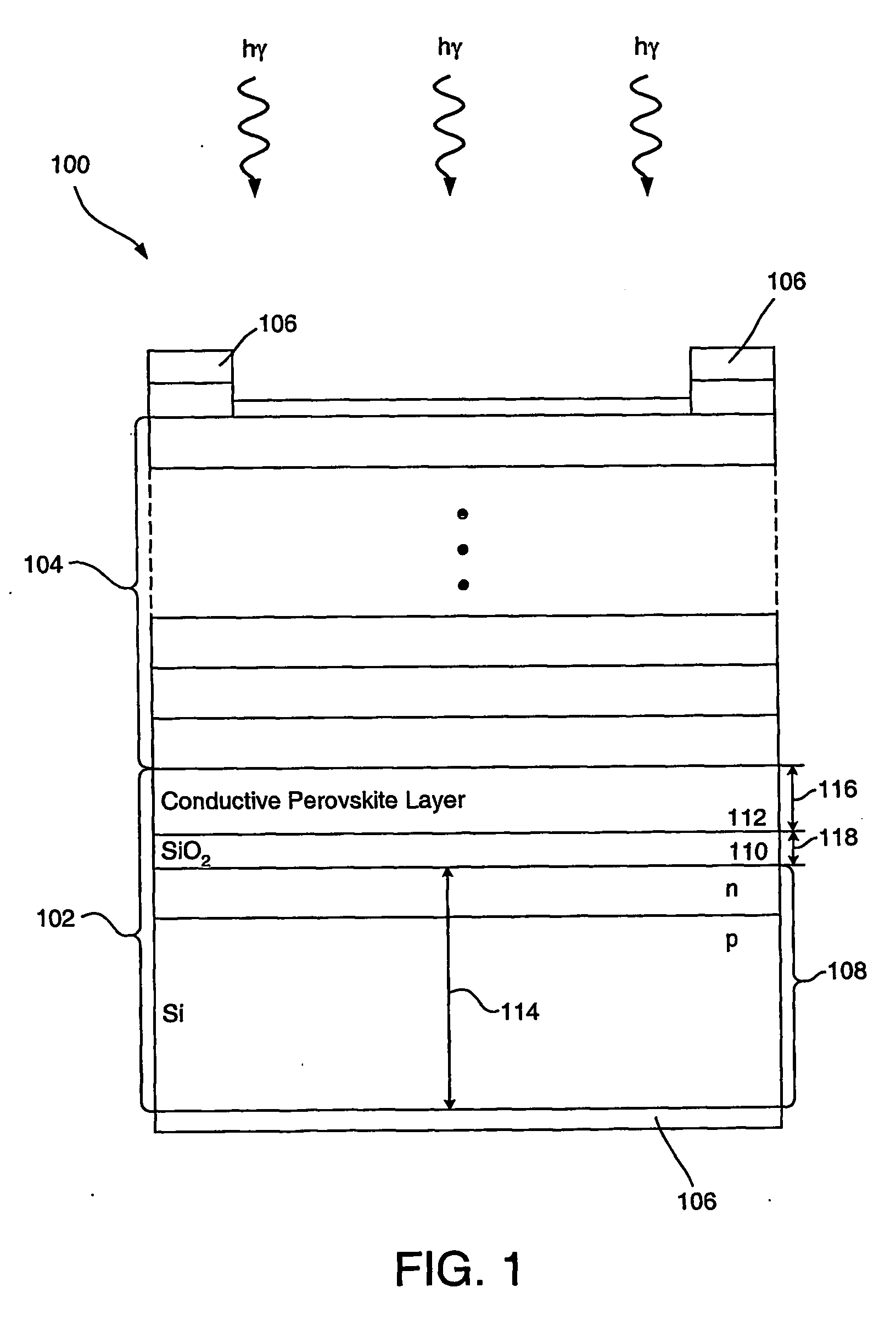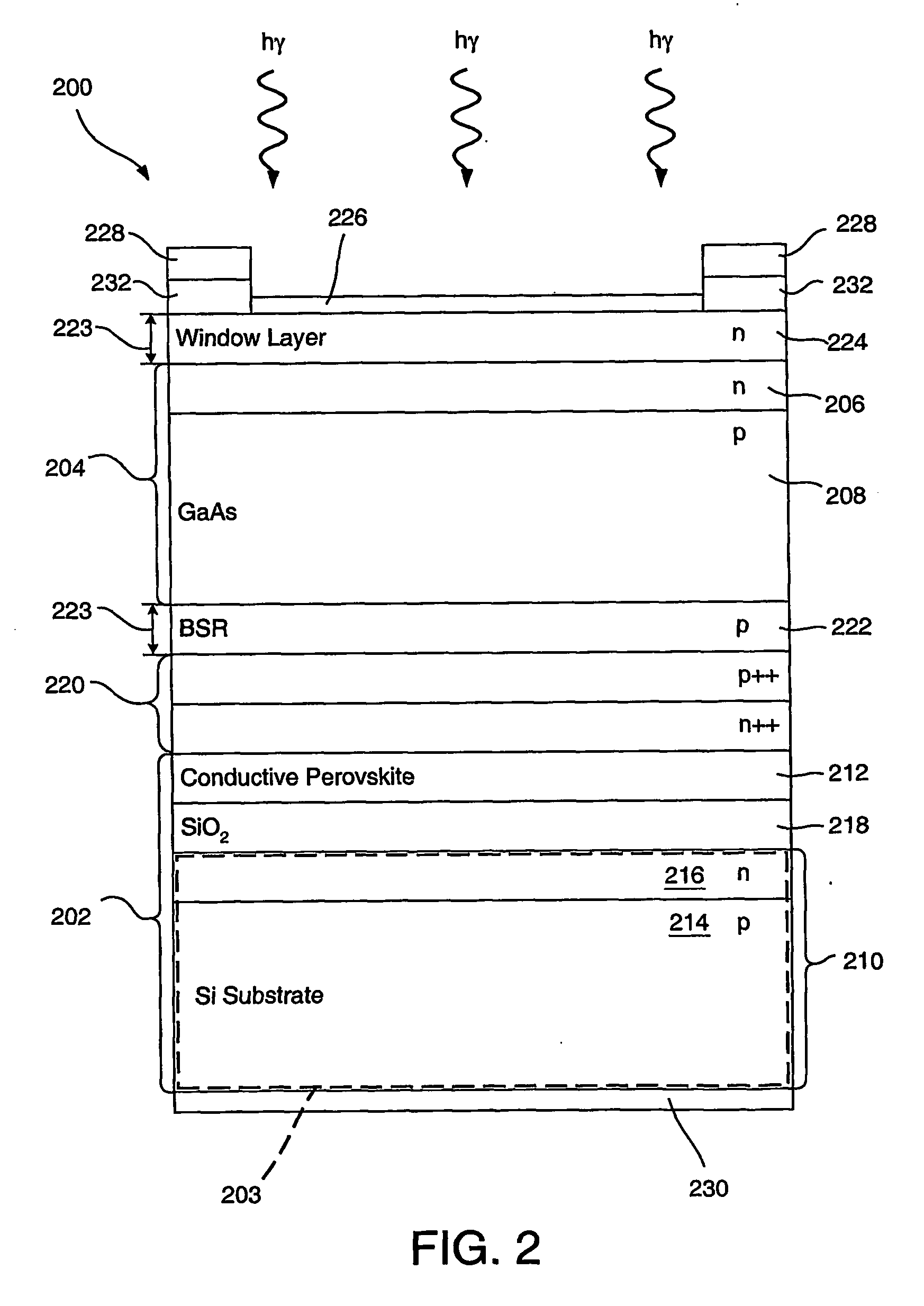Multi-junction, monolithic solar cell with active silicon substrate
a solar cell and active silicon technology, applied in the direction of photovoltaics, electrical devices, semiconductor devices, etc., can solve the problems of reducing the overall efficiency of the pv cell to convert radiant energy into electrical energy, positional errors, and difficult economic collection, storage and transportation of solar energy
- Summary
- Abstract
- Description
- Claims
- Application Information
AI Technical Summary
Benefits of technology
Problems solved by technology
Method used
Image
Examples
first embodiment
[0039]FIG. 2 illustrates a two subcell, tandem monolithic photovoltaic (PV) cell 200 in accordance with the present invention. As shown, the PV cell 200 generally includes, a compliant silicon substrate 202, having formed therein a first PV subcell 203, and a second PV subcell 204. Both the first PV subcell 203 and a second PV subcell 204 are operable to produce a photocurrent when photons having appropriate energy levels impinge on them.
[0040] The compliant silicon substrate 202 is generally composed of a base silicon layer 210 and a conductive perovskite layer 212. The base silicon layer 210 is composed substantially of silicon that has been doped (e.g., impurities added that accept or donate electrons) to form appropriate p-type 214 and n-type 216 regions of the first PV subcell 203. The base silicon layer 210 preferably has a band-gap energy of approximately 1.1 eV. In one embodiment, the conductive perovskite layer 212 comprises Strontium Titanate (SrTiO3) that has been electro...
second embodiment
[0049] Turning now to FIG. 3, illustrated therein is a three-PV subcell, tandem monolithic PV cell 300 in accordance with the present invention. As shown, the PV cell 300 generally includes, a compliant silicon substrate 302, having formed therein a first PV subcell 303, a second PV subcell 304, and a third PV subcell 305. The first PV subcell 303, the second PV subcell 304, and the third PV subcell 305 are all preferably operable to produce a photocurrent when photons having appropriate energy levels impinge on them.
[0050] The compliant silicon substrate 302 is generally composed of a base silicon layer 310, an intermediary oxide layer 318, and a conductive perovskite layer 312. The base silicon layer 310 is composed substantially of silicon that has been doped (e.g., impurities added that accept or donate electrons) to form appropriate p-type 314 and n-type 316 regions of the first PV subcell 303. The base silicon layer 310 preferably has a band-gap energy of approximately 1.1 eV....
PUM
 Login to View More
Login to View More Abstract
Description
Claims
Application Information
 Login to View More
Login to View More - R&D
- Intellectual Property
- Life Sciences
- Materials
- Tech Scout
- Unparalleled Data Quality
- Higher Quality Content
- 60% Fewer Hallucinations
Browse by: Latest US Patents, China's latest patents, Technical Efficacy Thesaurus, Application Domain, Technology Topic, Popular Technical Reports.
© 2025 PatSnap. All rights reserved.Legal|Privacy policy|Modern Slavery Act Transparency Statement|Sitemap|About US| Contact US: help@patsnap.com



